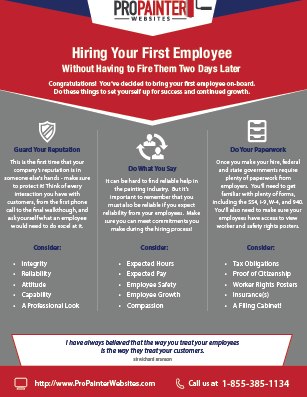Discover Just How Seasonal Impacts Can Affect The Effectiveness Of Industrial Outside Painting And Figure Out The Most Positive Times To Make Sure Resilient Outcomes For Your Task
Discover Just How Seasonal Impacts Can Affect The Effectiveness Of Industrial Outside Painting And Figure Out The Most Positive Times To Make Sure Resilient Outcomes For Your Task
Blog Article
Personnel Author-Aguilar Celik
When you're planning an industrial exterior paint job, seasonal aspects can make or break your results. You'll want to consider exactly how temperature level and moisture effect paint application and drying times. Choosing the ideal period can guarantee your paint sticks appropriately and lasts longer. But which seasons are absolutely the best for this type of job? Let' stucco painting company out the key elements that can impact your job's success.
The Influence of Temperature Level on Paint Application
When you're planning a business exterior painting job, the temperature level can substantially affect how well the paint adheres and dries out.
Ideally, you want to repaint when temperature levels vary in between 50 ° F and 85 ° F. If it's too cold, the paint may not heal correctly, bring about concerns like peeling off or cracking.
On the other hand, if it's also warm, the paint can dry too swiftly, protecting against proper adhesion and resulting in an irregular coating.
You need to likewise think about the moment of day; early morning or late afternoon provides cooler temperatures, which can be extra favorable.
Always examine the manufacturer's referrals for the certain paint you're utilizing, as they commonly provide support on the perfect temperature array for optimum outcomes.
Humidity and Its Impact on Drying Times
Temperature isn't the only environmental factor that influences your business exterior painting task; humidity plays a considerable function also. interior line painting st paul can decrease drying times dramatically, impacting the total top quality of your paint job.
When the air is filled with dampness, the paint takes longer to cure, which can cause issues like poor adhesion and a greater risk of mildew development. If you're repainting on a particularly damp day, be planned for prolonged delay times between coats.
It's vital to keep track of regional climate condition and plan accordingly. Ideally, go for moisture levels in between 40% and 70% for optimum drying.
Maintaining these factors in mind ensures your project remains on track and supplies a long-term finish.
Best Seasons for Commercial Outside Painting Projects
What's the very best time of year for your industrial outside paint jobs?
Springtime and early autumn are normally your best choices. During these periods, temperatures are moderate, and humidity degrees are commonly lower, producing perfect conditions for paint application and drying.
Prevent summertime's intense heat, which can trigger paint to completely dry too quickly, causing poor adhesion and coating. Similarly, wintertime's cool temperatures can prevent proper drying out and curing, risking the long life of your paint job.
Go for days with temperatures in between 50 ° F and 85 ° F for ideal outcomes. Keep in https://www.azcentral.com/story/sponsor-story/arizona-painting-company/2017/10/31/four-things-color-consultant-sees/107206736/ to examine the regional weather forecast for rainfall, as wet conditions can wreck your job.
Preparation around these elements ensures your paint project runs efficiently and lasts much longer.
Final thought
Finally, planning your commercial outside paint projects around seasonal considerations can make a significant difference in the outcome. By scheduling job during the suitable temperatures and moisture levels, you'll ensure much better attachment and drying times. Bear in mind to keep an eye on neighborhood weather prediction and pick the correct time of year-- springtime and early autumn are your best bets. Taking these actions will certainly aid you accomplish a resilient and expert finish that lasts.
